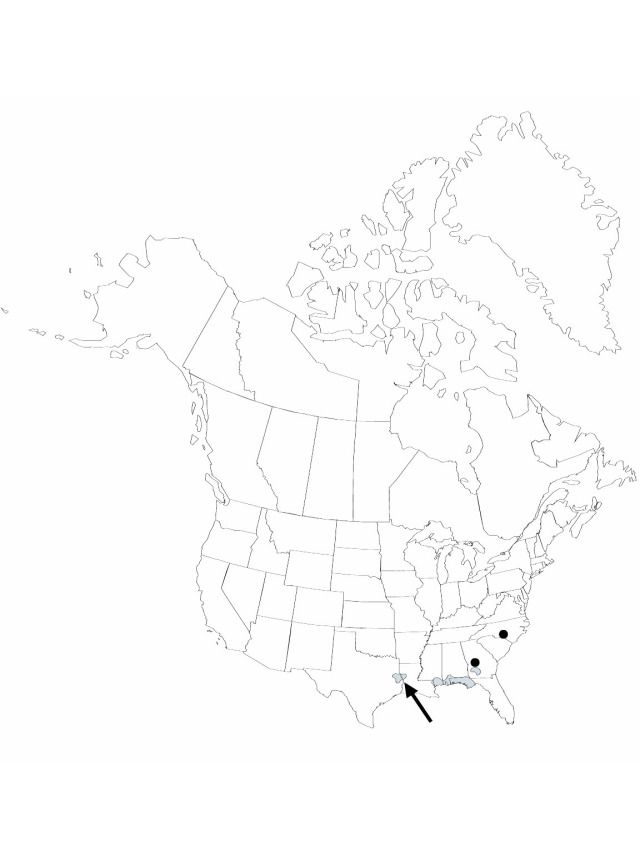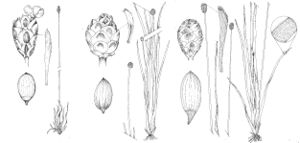Xyris scabrifolia
Bulletin of the Torrey Botanical Club 30: 325. 1903.
Herbs, perennial, cespitose, occasionally solitary, 2–10 (–11) dm, base bulbous to nearly bulbous. Stems compact. Leaves erect to ascending, 10–50 cm; sheaths pinkish, rugulose, papillate, or scabrous to nearly smooth, soft; blade dull green, linear, flattened, slightly to very twisted, 2.5–10 mm wide, smooth to papillate or scabrous, margins smooth to scabrous. Inflorescences: scape sheaths exceeded by leaves; scapes linear, terete, to 2.5 mm wide, smooth to minutely scabrous, 2–4-ribbed distally, ribs papillate to minutely scabrous; spikes prevalently ovoid-ellipsoid, (7–) 10–17 (–20) mm; fertile bracts 6–8 mm, margins entire, apex rounded. Flowers: lateral sepals included, slightly curved, 6–8 mm, keel scarious, lacerate to lacero-fimbriate; petals unfolding midday or afternoon, blade broadly obovate to nearly orbiculate, 3–5 mm; staminodes bearded. Seeds translucent, ellipsoid-cylindric, 0.6–1 mm, longitudinally multiribbed with fainter cross ribs. 2n = 18.
Phenology: Flowering summer–fall.
Habitat: Sandy peats of deep pineland bogs and seeps, bog edges
Elevation: 0–200 m
Distribution

Ala., Fla., Ga., La., Miss., N.C., Tex.
Discussion
Although I have seen no records from South Carolina, Xyris scabrifolia is to be expected there.
Several examples of what Bridges and Orzell have named Xyris chapmanii, together with a series of my own of this morph, show such intergradation that it is impossible to break the two out even as varieties.
Selected References
None.
Lower Taxa
"thin" is not a number."dm" is not declared as a valid unit of measurement for this property.
